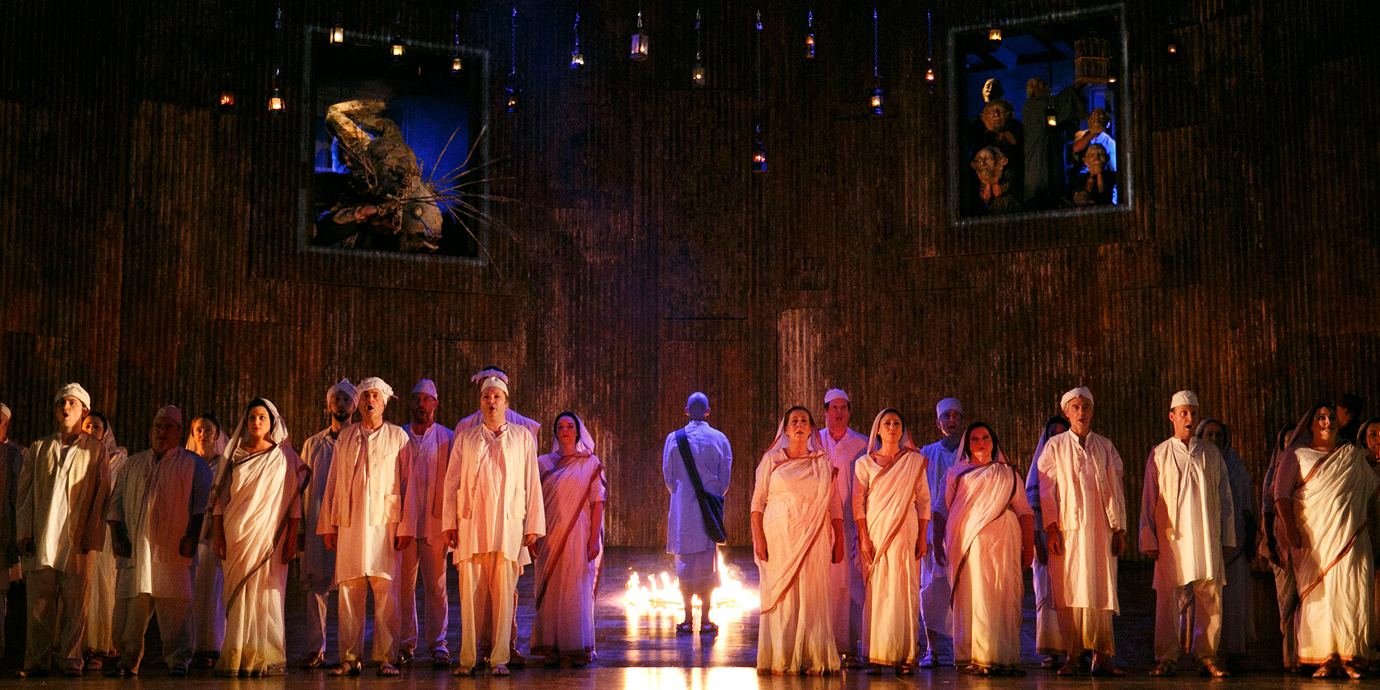Philip Glass is a contemporary American composer born in 1937. His vast musical output includes opera, symphonies, chamber music, songs and film scores. His compositions, which he calls ‘‘music with repetitive structures’, are renowned for their minimalist musical style.
Satyagraha, written in 1979 and premiered in 1980, is the second in the trilogy of ‘portrait’ operas, the others being Einstein on the Beach (1975) and Akhnaten.
Satyagraha is not a conventional opera. Many scholars have called it a ‘para-opera’: a work that intends to oppose the musical and dramatic expectations of Western operatic audiences. The opera is scored for nine solo voices, chorus and a greatly reduced orchestra comprising only strings and woodwind to create a distinctive instrumental colour without percussion, horns and brass. In typical eighteenth and nineteenth-century opera, arias, duets and chorus numbers were clearly differentiated in their contrasting musical styles and formed new sections in the musical score.
In contrast, the music of Satyagraha is written in continuous through-flowing scenes where solo, ensemble and chorus singing form part of one musical atmosphere, weaving in and out of the whole, and emotions are conveyed through changes in musical texture. This musical structure builds on the beginnings of the through-composed structure of opera championed by composers such as Wagner and Strauss in the late
nineteenth century with operas such as Salome and The Ring Cycle.
Glass’ compositions typically involve short repeated musical phrases, often using repeating rhythms and musical phrases that slowly morph over time on top
of a stable tonal harmony, creating an atmospheric sound world that can be perceived as a suspended moment in time. In Satyagraha, for example,
typical features of ‘minimalism’ are used in a variety of ways throughout the opera, as illustrated in the scanned score extracts in the Photo Gallery: in Act 2, Scene 2 short arpeggio orchestral patterns are repeated above a simple bass line ; solo vocal lines are written in linear, syllabic phrases that outline the tonal harmony of the music section, as in the example from Gandhi’s opening scene in Act 1; the ensemble sections are composed in many-layered homophony above ascending repetitive arpeggio figures, as seen in the beginning of Act 3.
